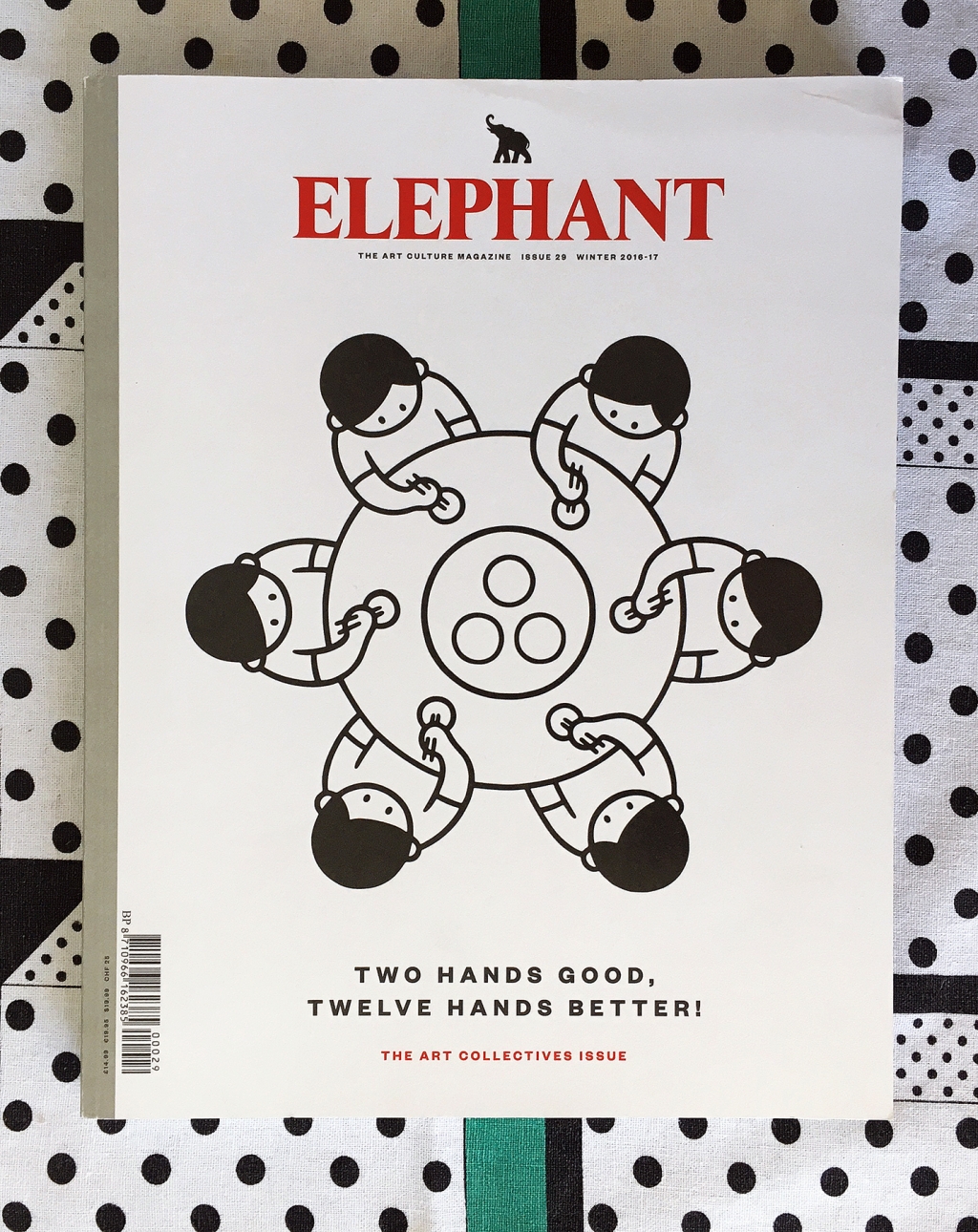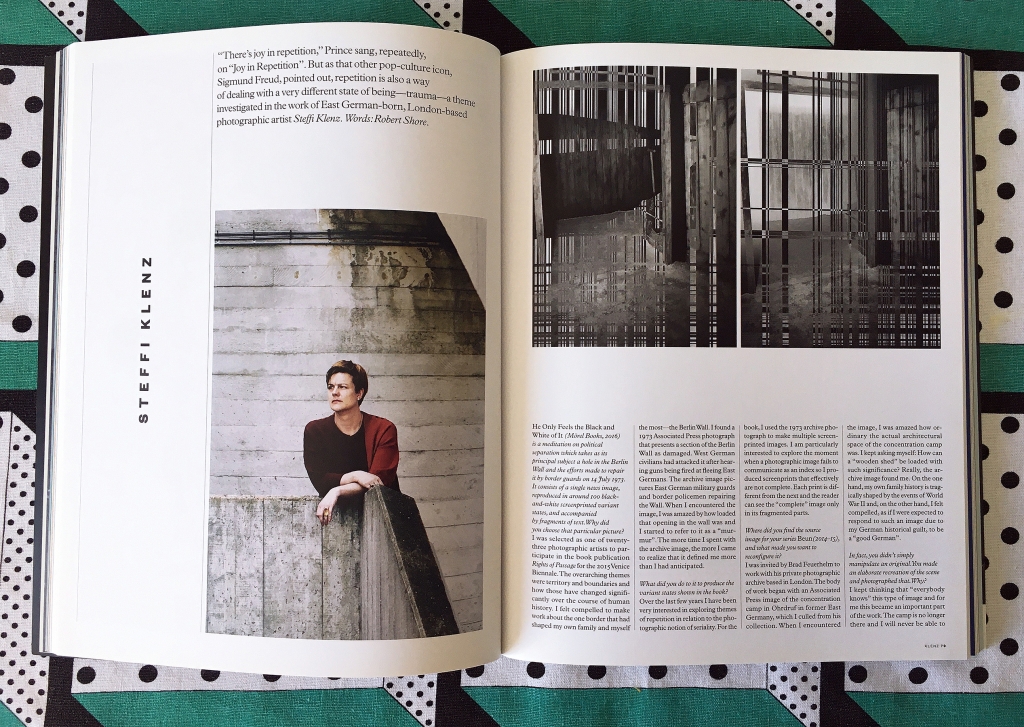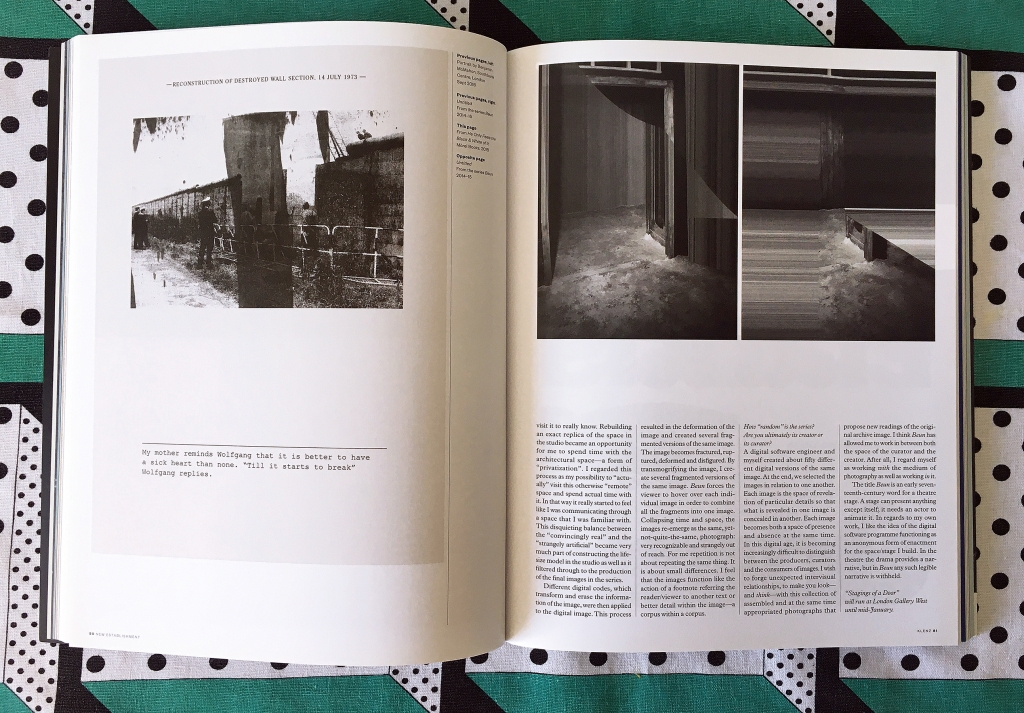Elephant Magazine
You don’t normally work with found images. Why this time?
My photographic practise is generally preoccupied with the built environment, critically exploring the notion of place and spatiality. My pieces are fundamentally concerned with challenging conventional conceptions of architectural representation. My work often uncovers unexpected narratives and traces of history embedded in the place of enquiry and I often critically explore the notion of displacement.
Prior to this point of working on the series Beun, I had not worked with an archive images or found material. Working with this archive image, allowed me to continue to re-examine the various relationships of the photographic image: as documentation of truth, purveyor of memory, and symbol of our culture. I certainly wanted to make you think about photography, its uses and its manipulations and I used this image to do so.
What is the ‘source image’ for the series? Where did you find it, and what made you want to reconfigure it?
I was invited by Brad Feuerhelm to work with his private photographic archive based in London. The body of work began with an associated press-image of the concentration camp in Ohrdruf in former East Germany, which I culled from his collection. When I encountered the image, I was amazed how ordinary the actual architectural space of the concentration camp was. How can a ‘wooden-shed’ be loaded with such significance? I kept asking myself.In that way the archive image found me in that my works are always interested to explore the expressive possibilities and architectural presence of the space itself.
My work has always struggled with questions of reference and representation and this became very pertinent when I started thinking about this archive image. I wanted to create a body of work that quietly provokes the question whether we really know and understand these images that have been widely circulated through reproductions and the mass media or whether we have willingly accepted them in our culture of spectatorship.
The more time I spent with the image, the more I came to realise that it defined me more than I wanted. On one hand, my own family history is tragically shaped by the events of World War II and on the other hand, I felt compelled it that it was as if I were expected to respond to such an image due to my German historical guilt, to be a ‘good German’.
In fact, you didn’t simply manipulate an original. You made an elaborate recreation of the scene and photographed that. Why?
I kept thinking that ‘everybody knows’ this type of image and for me this became an important part of the work. The camp is no longer there and I will never be able to visit it to really know. Rebuilding an exact replica of the space in the studio became an opportunity for me to spend time with the architectural space - a form of ‘privatisation’. I regarded this process as my possibility to ‘actually’ visit this otherwise ‘remote’ space and spend actual time with it. In that way it really started to feel like I was communicating through a space that I was familiar with. This disquieting balance between the ‘convincingly real’ and the ‘strangely artificial’ became very much part of constructing the life-size model in the studio as well as it filtered through to the production of the final images in the series.
What is the role of repetition in your work? creating meaning or affect in a series such as Beun?
My work has a strong relationship with Virginia Woolf’s literature in that I use her writings as a formal investigation into theories and methodologies of fragmentation visible in a number of my works. Woolf’s plots unfold through shifting perspectives of each character’s stream of consciousness and these shifts can occur even mid-sentence. Particularly her novel ‘To the Lighthouse’ (1927) investigates the means of perception, attempting to understand people in the act of looking.
Several pieces of mine have explored themes of fragmentation and repetition in relation to the photography’s notion of ‘seriality’. But instead of aligning my practice with photography’s over-determined ideas of being ‘in-series’, I am interested to explore other ways to present my photographs. I particularly play with sequential notions or modes of the fragmented image as display structures and my works suggest that navigating a terrain or building results in navigating through my images.
How did repetition create meaning or affect in a series such as Beun?
Using the digital image file of the architectural set in the studio (an exact replica of the original archive image), I worked with a software engineer.
Different digital codes, that transform and erase information of the image, are applied to the digital image. This process results in the deformation of the image and creates several fragmented versions of the same image. The image becomes fractured, ruptured, deformed and disfigured into digital codec mismatch.
According to Sigmund Freud and Pierre Janet, trauma demands the repetition of the past. Memories of the trauma return as fragmented images and behavioural re-enactments. Freud and Janet suggest that the compulsion to repeat is the only way of remembering.
By transmogrifying the image, I create several fragmented versions of the same image. Beun forces the viewer to hover over each individual image in order to combine all the fragments into one image. Collapsing time and space, my resulting images re-emerge as the same, yet-not-quite-the-same, photograph: very recognizable and strangely out of reach.
For me repetition is not about repeating the same thing. It is about small differences. I feel like that the images function like the action of a footnote referring the reader/viewer to another text or better detail within the image - a corpus within a corpus.
I like the fact that the images do not give you an indication of where to look: you have to find yourself in relation to it. In a way it is a refusal to make a ‘whole image’ and rather offers the viewer a relation of parts to parts. I like to think of the disruption and fragmentations in the images as ‘communicative interruptions’. In a way the sequence of the individual images provides an experience of looking: a form of unfolding.
I like the ‘failure of unity’ in this body of work: the individual images point to a disjointed harmony, where the irreconciliation of difference both complements and detracts from the whole. Beun encourages you to deal with the slippages of our memory and as Susan Sontag suggests in her book Regarding the Pain of Others (2003) photography is as much about what we do and don’t remember.
How many repetitions did you generate? How ‘random’ is the series? Are you ultimately its creator or its curator?
The digital software engineer and myself created about 50 different digital versions of the same image. At the end, we selected the images in relation to one another. Each image is the space of revelation of particular details so that what is revealed in one image is concealed in another. Each image becomes both a space of presence and absence at the same time.
In this digital age, it is becoming increasingly difficult to distinguish between the producers, curator and the consumers of images. I wish to forge unexpected
inter-visual relationships, to make you look – and think – with this collection of assembled and at the same time appropriated photographs that propose new readings of the original archive image.
Beun proposes questions about images and how we see them, what we choose to look at; how we collate and discard and how we remember images.
I think Beun has allowed me to work in-between both the space of the curator as well as the creator after all, I regard myself as working with the medium of photography as well as working in it.
Robert Shore is a writer, editor and publisher. He is the former creative director for Elephant Magazine and was previously deputy editor at Art Review magazine. As an arts journalist he has contributed to the Sunday Times, the Guardian, and Metro.
(This interview between Robert Shore and Steffi Klenz was firstly published in the magazine Elephant, Issue 29, 2016, UK and USA)


